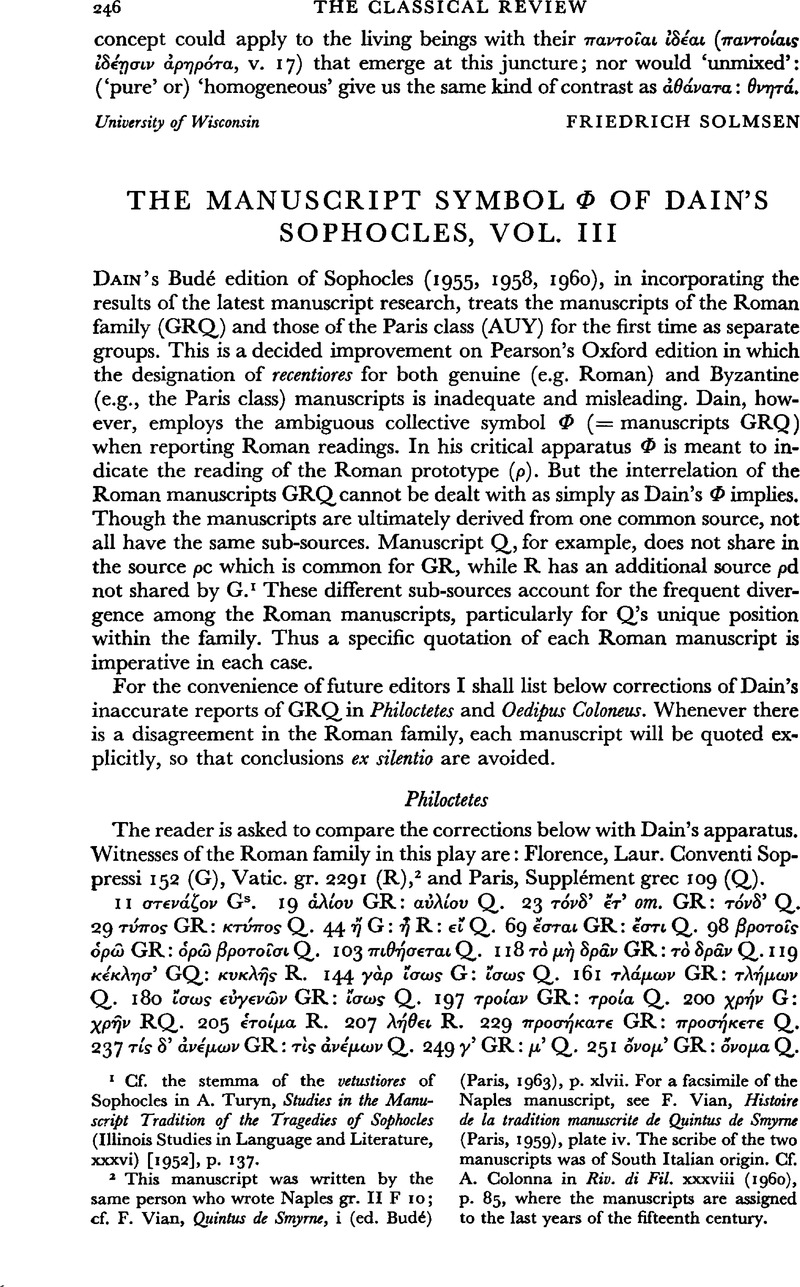No CrossRef data available.
Article contents
The manuscript symbol Φ of Dain's Sophocles, vol. iii
Published online by Cambridge University Press: 27 February 2009
Abstract

- Type
- Review Article
- Information
- Copyright
- Copyright © The Classical Association 1967
References
page 246 note 1 Cf. the stemma of the vetustiores Sophocles in A. Turyn, Studies in the Manuscript Tradition of the Tragedies of Sophocles (Illinois Studies in Language and Literature, xxxvi) [1952], p. 137.
page 246 note 2 This manuscript was written by the same person who wrote Naples gr. II F 10; cf. Vian, F., Quintus de Smyrne, i (ed. Budé, ) (Paris, 1963), p. xlviiGoogle Scholar. For a facsimile of the Naples manuscript, see Vian, F., Histoire de la tradition manuscrite de Quintus de Smyrne (Paris, 1959)Google Scholar, plate iv. The scribe of the two manuscripts was of South Italian origin. Cf. A. Colonna in Riv. di Fil. xxxviii (1960), p. 85, where the manuscripts are assigned to the last years of the fifteenth century.
page 247 note 1 This remark must be added, since the metrical flaw in Dain's printed text of O.C. III8 does not stem from the Roman family, as might be inferred from his critical notation to that line.
Incidentally, Phil. 510 of Dain's text reads the quite unusual word order Ἀτρε⋯δας ἔχθεις. While this sequence is metrically tenable, it is nevertheless unwarranted. Manuscripts LQ,, the Thoman (ZgZnZoZp), Triclinian (TTa), and Paris (AUY) manuscripts unas animously read ἔχθεις ⋯τρε⋯δας. Only manuto script R has the sequence accepted by Dain. Hence there is no reason for the standard reading of this line to be abandoned in favour of a weakly attested version.




